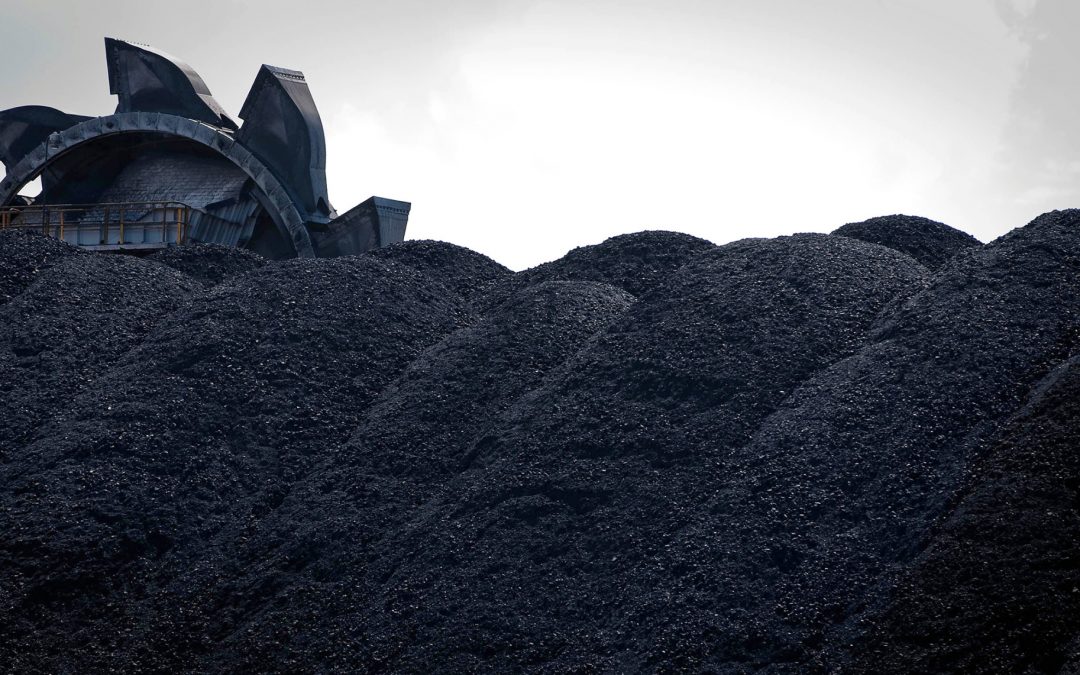The Department of Industry, Science and Resources (DISER) has released its March 2024 Resources and Energy Quarterly, which sets out forecasts and projections for Australia’s major resource exports to 2028-2029.
DISER’s March 2024 quarterly forecast shows that the value of Australian thermal coal exports has declined further and faster than predicted in 2023 due to falling prices. This can be expected to translate to tighter balance sheets for thermal coalmine operators in Australia, which have already experienced falls in EBITDA margins in 2024.
DISER projects Australia’s thermal coal export earnings to decline from A$36 billion in FY2023-24 to about A$21 billion by FY2028-29 (in real terms) as coal prices continue to decline. Australian thermal coal exports are expected to fall by 2.6% a year over the outlook period.
Thermal coal spot prices are projected by DISER to fall from US$133 a tonne in 2024 to US$105 a tonne (in real terms) by 2029. Contract prices are expected to fall from about US$200 a tonne (in JFY2023-24), converging on spot prices. DISER states that, “The 6,000 kcal Newcastle price has averaged $US127 a tonne across January and February, compared with $US135 a tonne in the December quarter 2023. In the near term, seaborne thermal coal imports are expected to be subdued by high inventories across several markets and by decreased demand from China.”
DISER expects trade in thermal coal to broadly decline over the next five years, suggesting that Indonesian exports have peaked and are expected to decline over the outlook period. However, the expectation that Indonesian thermal coal exports have peaked may be misplaced. Indonesia’s latest coal production quota for 2024 of 922Mt is 30% higher than the initial expected target of 710Mt.
Thermal coal demand in JKT (~65% of Australian thermal coal exports) is expected to continue to decline, while India (~5%) and China (~20%) seek to meet any increase in thermal coal demand with domestic production.
Australian thermal coal export volumes spiked in 2023 following the resumption of coal imports from China in early 2023. However, this is expected to be short lived as China’s domestic thermal coal production rises and renewable power generation increases. China’s solar and wind power generation is set to increase 24% in 2024, alongside a 3.3% in hydropower generation as drought conditions recede. DISER’s forecast also highlights that any further increases in Chinese thermal coal demand in the outlook period are expected to be supplied domestically, rather than from Australian exports. In India, DISER expects demand for coal to rise over the next five years, but notes that higher domestic output is forecast to meet most of this demand. that India had surpassed 1 billion tonnes in coal and ignite production for the first time, following a 70% expansion in its domestic production capacity over the past 10 years. Japan is expected to reduce its imports of seaborne thermal coal from 127Mt in 2023 to 119Mt by 2029. South Korea’s thermal coal imports are also expected to decline in the outlook period as nuclear energy deployment is expected to increase. While Taiwan aims to reduce the share of coal in its electricity generation from 43% in 2022 to 30% by 2030 with about 20% of its coal plants potentially retiring by 2029.
This leaves Vietnam, the Philippines, Bangladesh and Pakistan as the only markets where seaborne import demand is expected by DISER to increase during the outlook period. Combined demand from these markets accounted for only 5% of Australian thermal coal exports in 2023.
This projection may also be overestimating the demand for Australian thermal coal exports from Vietnam based on an assumption of declining output from Indonesia and the completion of planned coal power plants. Additionally, while Vietnam has 15 coal power plants in the pipeline, it is unclear how these projects will all be financed to completion. China has been the largest financier of coal power development in Vietnam, but stated in 2021 it would not fund new coal-fired power projects abroad. Importantly, coal power plants under construction in Vietnam are being configured for Indonesian, not Australian, coal. Vietnam has also been reducing plans for new coal power plants in favour of gas and renewables, and the US$15.5 billion Just Energy Transition Partnership (JETP) deal will build on Vietnam’s renewables construction by supporting its integration and driving its growth while limiting coal power construction.
DISER also states that there is a high likelihood of a La Niña weather event reappearing in 2024, bringing with it heavy rainfall likely to be generally unfavourable to coal production and transport in Australia and Indonesia. According to IEEFA analysis, the impacts of severe wet weather and flooding resulted in at least 20Mt of lost run-of-mine (ROM) coal production, equivalent to at least $5 billion in lost coal sales.
Source: Hellenic Shipping News






